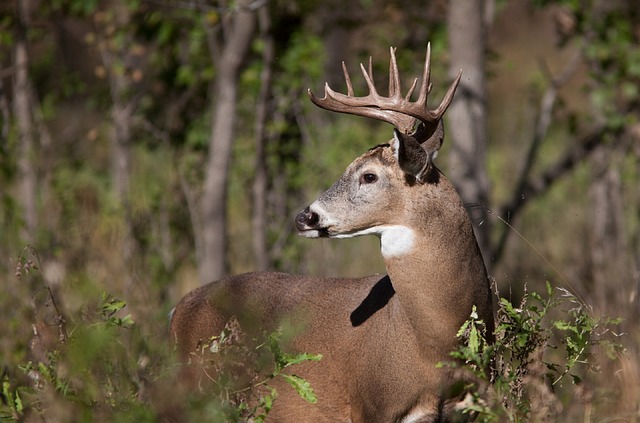This post is the second of three blogs that discuss some key aspects of white-tailed deer herd management. The importance of doe management was outlined in the first post. This post will discuss specifics of buck management.
Part three will finish with how to better manage for age and sex ratios. Combined, these three topics will provide landowners and managers with basic information and tools to better manage deer herds on their lands.
For many landowners and hunting clubs the term “buck management” is synonymous with “antler management.” Let's be honest; many of us take to the field early, in freezing weather, just for the chance to harvest a trophy buck.

Most hunters will admit to having buck fever at least once in their lifetime, which usually make the best stories! Sure, hunters enjoy taking does for the meat and the thrill of the hunt, but when was the last time you saw a doe mount on someone’s wall?
Through proper buck management you can help increase the quality and quantity of bucks on your lands.
Be Part of the Solution!
One of the worst assumptions deer hunters continuously make is that if they do not shoot a particular deer, then their neighbors are sure to. This assumption leads to many bucks being harvested prematurely. My belief has always been to assume the best and do the right thing regardless if anyone is watching. If ethical and responsible buck managers forgo their good sense out of paranoia, they are only contributing to the problem. White-tailed deer herd management plans should begin with a good understanding of population dynamics and follow through with strict harvest restrictions and limits. Armed with the appropriate data, we can develop a tailored white-tailed deer herd management plan for your specific situation and goals. See my post “Why survey white-tailed deer” for more info on the importance of deer surveys.
Antler Growth Essentials
Antler growth is dependent on genetics, nutrition, and age. These three factors can be manipulated by hunters through selective harvesting, habitat manipulation, and patience. Books have been written on these topics. I will merely scratch the surface of each. It is up to you, the hunter, to practice and teach proper hunting ethics to younger generations.
Genetics
Hunters manipulate genetics through the harvest of culls and showing enough restraint to allow good bucks to reach maturity (4.5 years or more). Cull bucks are those that have undesired antler characteristics and are removed to prevent breeding. Spike bucks are often removed first. These deer are the only ones with actual “horns”, as soon as they branch horns become antlers. Spikes are not doomed to remain spikes, but they are less likely to ever develop into trophy deer. Other culls include those with unsymmetrical antlers or low point counts at maturity. Leaving a desirable buck to breed as many does as possible will increase the number of desirable bucks in the future.
Nutrition
Nutrition plays a huge role in antler development. A major factor in antler growth from year to year is the amount of rainfall from the previous spring. Wet springs provide abundant food sources for bucks while they are re-growing their antlers in the summer. Years following low spring rainfall can expect to yield smaller antlers. Ensuring your land has adequate browse year-round and retaining hard mast producing trees will aid in retaining bucks on your property. Annual supplemental feeding and food plots that provide protein, sodium and calcium are also beneficial to growing big bucks.
Age
Age is one of the hardest factors to manage for trophy bucks. This takes discipline, restraint and patience. Recognizing signs of deer age before pulling the trigger is an essential skill for any serious hunter. Older bucks can be recognized by white and gray in the face, sagging bellies, bowed backs, thick necks, and antlers with extensive character and thicker bases. Young bucks will typically have thinner antler bases, flat backs and bellies, thinner frames, and will typically be less weary of coming out in the open. Aging teeth is the best way to estimate deer age, but these symptoms will help you decipher older from younger deer in the field before you shoot. Allowing bucks to see another winter is often the best way to improve their antler size.
Maintaining harvest records, game camera images, and survey results each year will help build an effective buck management program on your lands. Pond King can help survey your deer herd and develop tailored white-tailed deer herd management recommendations.



